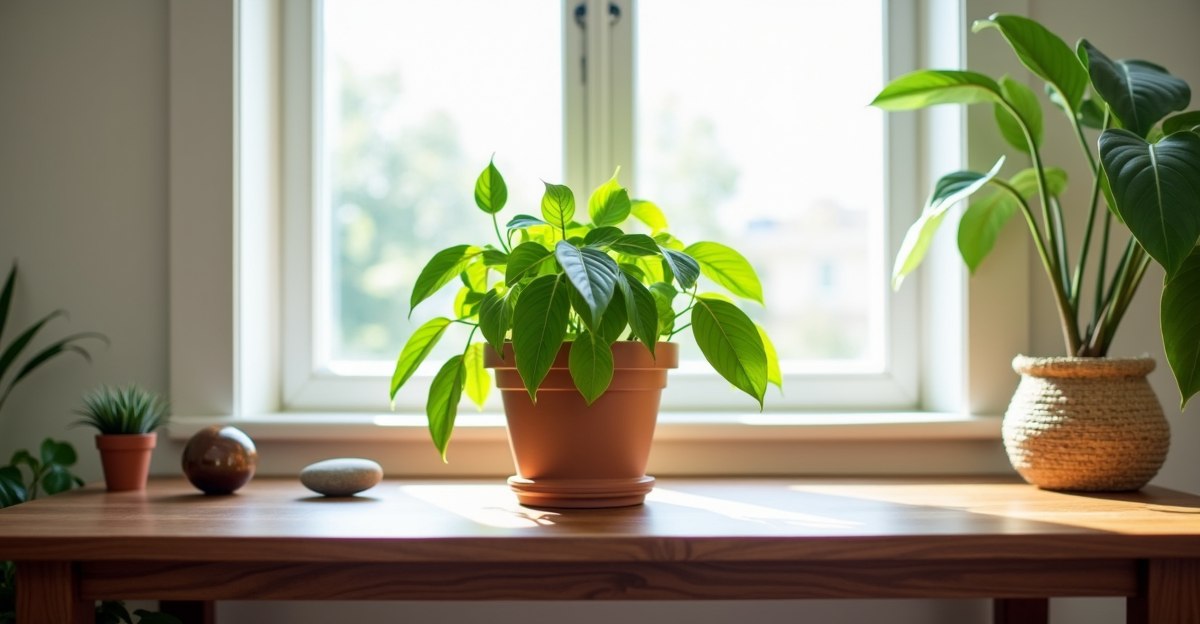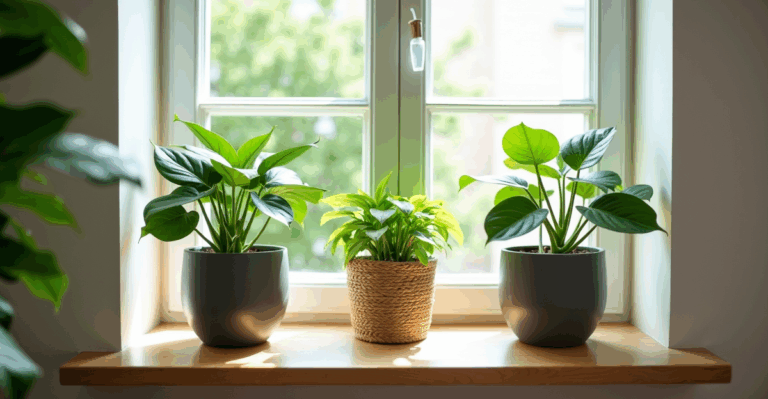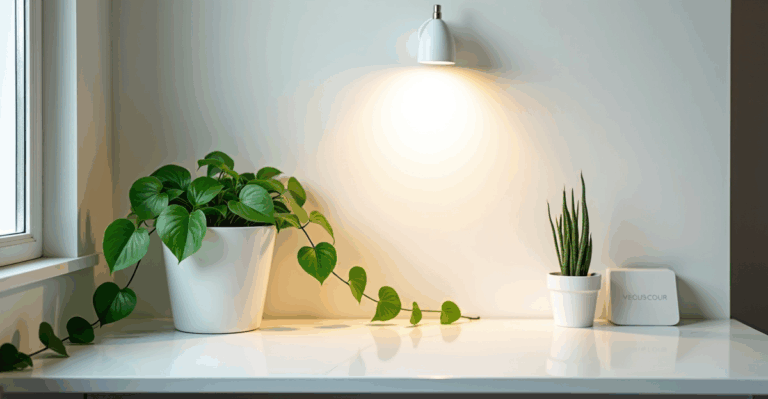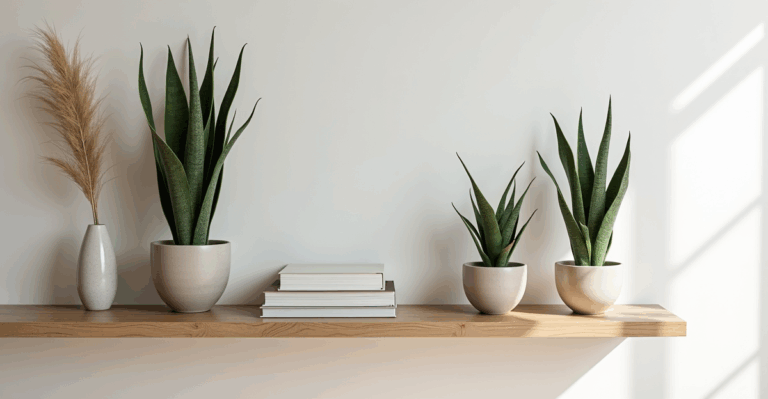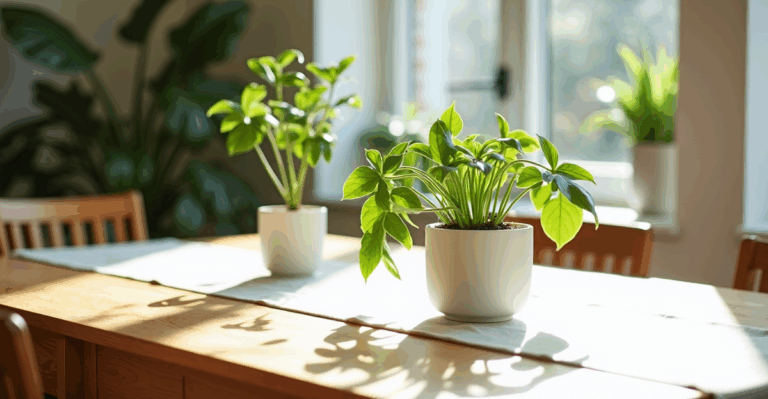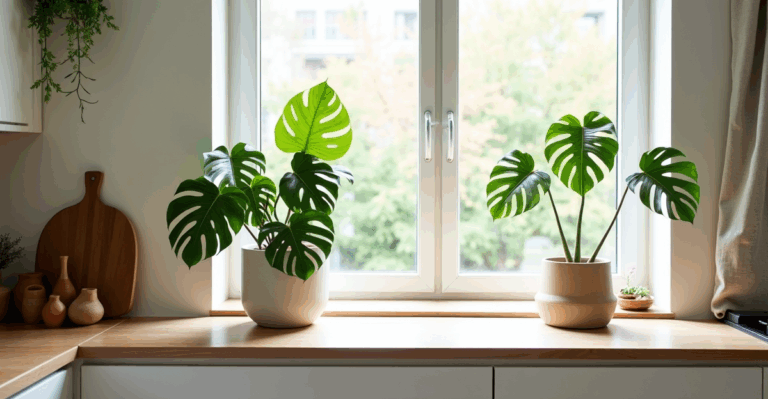The Pothos That Thrives (Without Sunlight) on Your Home Office Desk
You know that little Pothos you picked up for your home office desk? The one you thought would add a touch of green without demanding much? That’s the one I mean. The one that’s now looking more like a pale, leggy vine than the lush, cascading beauty you pictured. It’s not your fault. Pothos seems like it should be easy—after all, it’s the plant everyone gives away at the nursery. But here’s the thing: low light isn’t one-size-fits-all, and a desk in a windowless room or a corner far from natural light is a very different challenge than a desk under a bright, indirect window. You might be overwatering it, placing it too far from light, or using a pot that holds onto too much water, making it look miserable. The good news? Fixing it is simpler than you think, and it starts with understanding your specific desk light situation.
Pothos (Epipremnum aureum) is a champion of low light, but it still needs some light to photosynthesize and stay vibrant. It thrives in bright, indirect light (like an east-facing window), but it can tolerate lower levels—if you adjust your care. The key is recognizing the difference between “low light” and “no light.” A desk 3-4 feet from a north-facing window gets gentle, consistent light, while a desk in the middle of a windowless hallway gets near-darkness. Most people assume “low light” means “anywhere,” then wonder why their plant looks stressed. Let’s untangle that.
Why “Low Light” Isn’t the Same as “No Light” (And What That Means for Your Desk)
The most common mistake? Assuming all low-light spaces are equal. A desk under a bright, indirect window (even a small one) gets about 50-100 foot-candles of light—enough for Pothos to do its thing. A desk tucked behind a bookshelf or far from a window might get 20-30 foot-candles, where Pothos will slowly lose color and stretch out. Your Pothos isn’t dying in low light—it’s just struggling to find energy. This is where placement and light awareness become your secret weapon. Don’t just place it anywhere “out of the way.” Test your desk’s light: hold your hand flat against the desk surface and see if you can make out the shadow. If it’s a soft, vague shape, that’s low light. If it’s sharp and distinct, that’s better. That light is what your Pothos needs.
Watering Right: The Desk-Specific Fix (No Repotting Needed)
Desk Pothos often suffer from overwatering, not under-watering. Why? Small, shallow planters (like the common plastic ones) hold onto water, and desks are often in rooms with less airflow than living rooms. Wait until the top 2–3 inches of soil feel dry to the touch—not just the surface. Stick your finger in. If it’s cool and damp, wait a few more days. A desk in low light grows slowly, so it needs far less water than a plant in bright light. Overwatering in low light leads to root rot, which is invisible until it’s too late. If you’ve been watering weekly, switch to checking weekly and only watering when dry. For a desk in a dry office (or during winter heating), a quick misting once a week can help boost humidity slightly without flooding the roots.
Styling with Realism: Desk-Friendly Displays That Work (Not Just Look Pretty)
Styling isn’t about stacking plants like tiny sculptures. It’s about making your desk functional while letting the plant shine. Avoid heavy ceramic pots—they slip easily, trap moisture, and are hard to move. Instead, use a lightweight pot (like a small terracotta or our 3D-printed option) with a smooth, shallow tray or a small, stylish riser. This elevates the plant slightly, making it feel intentional, not just dumped on the desk. A simple white ceramic or woven fiber pot works. Place it off-center on your desk, maybe next to your keyboard or beside a stack of books, not dead center where it blocks your view. For a minimalist look, a single trailing vine in a slender, modern pot (like one of our 3D-printed designs) is more elegant than a big, bulky pot. And always use a tray underneath—spilled water is the enemy of a tidy desk, and it protects your wood surface.
The Hidden Trap: Self-Watering Pots & Small Spaces
Self-watering pots? Great for busy people with sunny windows. But on a desk in low light? They’re a trap. The reservoir holds constant moisture, and low light means the plant uses water slower than the reservoir releases it. This leads to waterlogged roots and root rot faster than you’d think. Skip them for desk Pothos. If you must use a self-watering pot, fill the reservoir only halfway and check it weekly. But honestly, it’s simpler to just stick to a standard pot with drainage holes and water only when needed.
Edge Cases & When to Be Patient
This isn’t a miracle fix. If your desk is completely windowless (like a basement office), Pothos will eventually fade and stop growing. You’ll need supplemental light—not a bright LED desk lamp (that’s too harsh), but a small, warm-white grow light set on a timer for 6-8 hours a day, placed a few feet away. For the average home office desk (with some natural light), patience is key. You might see slow, healthy growth for a few weeks before it really starts cascading. Also, avoid fertilizer during the first 3-6 months in low light—it can burn roots. Wait until you see new growth before adding a diluted, balanced liquid fertilizer once a month.
Why Your Standard Planter Isn’t Working (And What to Do Instead)
Most planters sold for desks are either too heavy (ceramic) or too plastic (trapping water). They don’t account for the desk’s real environment: limited airflow, small space, and the fact that you don’t want to move a 2-pound pot every time you rearrange your keyboard. A standard pot might look cute in a photo, but it’s a practical nightmare on a desk. The solution? A planter that’s lightweight, has drainage, fits perfectly on a standard desk, and protects your surface. That’s why we designed our 3D-printed planters—they’re lightweight enough to lift easily, have perfect drainage, and sit flush without slipping. The smooth, modern lines also make the plant the focus, not the pot. It’s a small upgrade with a huge impact on how your desk feels.
Key Takeaways
- Light matters: Place Pothos where it gets some natural light (a soft shadow = good), not just a dark corner.
- Water less: Let the top 2–3 inches of soil dry out before watering (check with your finger!).
- Skip heavy pots: Use lightweight, well-draining pots with a tray to protect your desk.
Your home office desk is your creative zone. It should feel inviting, not cluttered with a plant that’s struggling to survive. Pothos is the perfect companion for this space—it’s forgiving, beautiful, and thrives when you give it what it actually needs: the right light, the right water, and a simple, functional home. When you’re ready to grow your setup, explore our 3D-printed planters.

